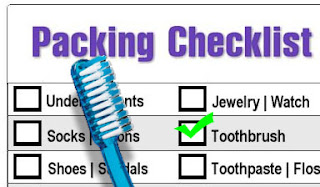
As with most products in the telecom industry, product designs evolve at a rapid pace. Often times specifications are written based on outdated information. Old specifications make sourcing material difficult, especially when updated products meet or exceed the written spec.
In the case of handholes, the sales team at Comstar Supply faces an added level of difficulty. In addition to potentially outdated specifications, there are often assumptions made to the product's capability. Our sales team is trained to help you understand the applications for handholes and their ratings. On several occasions, we refused to provide a quote based on the unrealistic expectations for the design of the product. Ultimately those projects went back to the drawing board for an alternative solution.
Here are a few of the frequently asked questions and requests we receive for handhole opportunities.
Can I order a handhole with an AASHTO H-20 load rating?
Typically made of a polymer concrete composite, handholes fall outside the framework of AASHTO. Handholes are designed for "non-deliberate" traffic, and they fall under ANSI/SCTE 77 for performance standards.
Why are handholes often confused for AASHTO H-20?
The published test loads of composite handholes may exceed test loads of H-20 materials. Remember that handholes are made of composite material, not precast concrete. Some manufacturer's may claim that their product exceeds H-20, but they will be quick to tell you that the materials are not AASHTO recognized. As Hubbell Power Systems states, "A tremendous misunderstanding has been that if a product tested in excess of the design load, it was thought to be an acceptable product for the intended application. This is a gross oversight. There could be very minimal safety factors, and what does a 1, 10, or 1000 cycle test indicate? A false sense of security could lead to personal injury and/or equipment damage." In other words, buyer beware!
Can I put a steel or cast iron lid on a handhole in order to meet H-20?
 We are aware of end users specifying handholes this way. Yes, you can install a steel lid, but it still will not be H-20. Handholes are designed and tested as a complete system under ANSI including the lid and base. So even if you put a steel lid onto a composite box, it is still a system including a composite box that is not governed under AASHTO. The inherent flexibility of steel as a lid may allow for additional cycles (i.e. more vehicular traffic) to the lid itself. However, either the added weight of the lid, or the lateral forces on the handhole in deliberate traffic, may cause it to fail.
We are aware of end users specifying handholes this way. Yes, you can install a steel lid, but it still will not be H-20. Handholes are designed and tested as a complete system under ANSI including the lid and base. So even if you put a steel lid onto a composite box, it is still a system including a composite box that is not governed under AASHTO. The inherent flexibility of steel as a lid may allow for additional cycles (i.e. more vehicular traffic) to the lid itself. However, either the added weight of the lid, or the lateral forces on the handhole in deliberate traffic, may cause it to fail.What is the difference between design load and test load of a handhole?
The ANSI application tier number relates to a nominal design load multiplied by 1,000 pounds. For example, Tier 8 is 8 x 1000 pounds, or 8000 lbs. All ANSI tier loadings have a corresponding test load, which is 50% greater than the design load. The maximum deflection at the indicated design load shall be one half-inch for vertical tests, and a quarter-inch per foot of length for lateral tests.
Can I order locking lids or hardware for handholes?
Yes. We can offer "tamper-resistant" penta head bolts, anti-vibration systems and keyed locking mechanisms. The most popular locking mechanism on the market today is the Lockout Device.
Can I order a gasket and a closed bottom for my handhole?
Yes, but you would be better off with an above ground pedestal if you want the contents of your handhole to stay dry. Think about how many homeowners struggle with wet basements. Water will find a way.
Gaskets are only effective if they provide a positive seal around the entire inside of the ring. As soon as dirt and rocks compress the gasket, you will have water ingress. Odds are your handhole will encounter a lot of rocks and dirt during installation. If your handhole also has a closed bottom, this will significantly slow the draining process if water does get in. That's a double-whammy.





